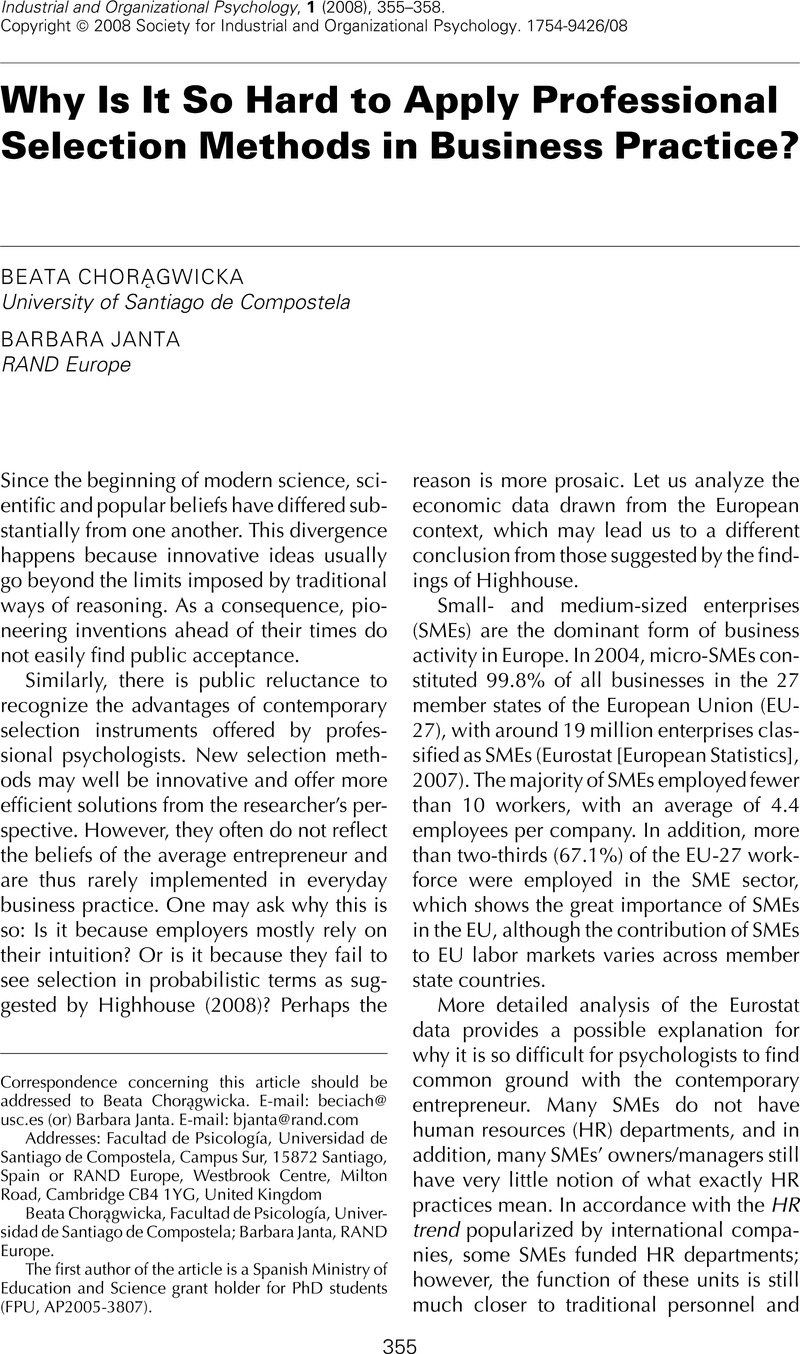Crossref Citations
This article has been cited by the following publications. This list is generated based on data provided by Crossref.
Highhouse, Scott
2008.
Facts Are Stubborn Things.
Industrial and Organizational Psychology,
Vol. 1,
Issue. 3,
p.
373.
Wyatt, Madeleine R.R.
Pathak, Suchi B.
and
Zibarras, Lara D.
2010.
Advancing selection in an SME: Is best practice methodology applicable?.
International Small Business Journal: Researching Entrepreneurship,
Vol. 28,
Issue. 3,
p.
258.
WINKLER, SILVAN
KÖNIG, CORNELIUS J.
and
KLEINMANN, MARTIN
2010.
SINGLE‐ATTRIBUTE UTILITY ANALYSIS MAY BE FUTILE, BUT THIS CAN’T BE THE END OF THE STORY: CAUSAL CHAIN ANALYSIS AS AN ALTERNATIVE.
Personnel Psychology,
Vol. 63,
Issue. 4,
p.
1041.
Winkler, Silvan
König, Cornelius J.
and
Kleinmann, Martin
2013.
What makes human resource information successful? Managers' perceptions of attributes for successful human resource information.
The International Journal of Human Resource Management,
Vol. 24,
Issue. 2,
p.
227.
Burton, Jason W.
Stein, Mari‐Klara
and
Jensen, Tina Blegind
2020.
A systematic review of algorithm aversion in augmented decision making.
Journal of Behavioral Decision Making,
Vol. 33,
Issue. 2,
p.
220.



